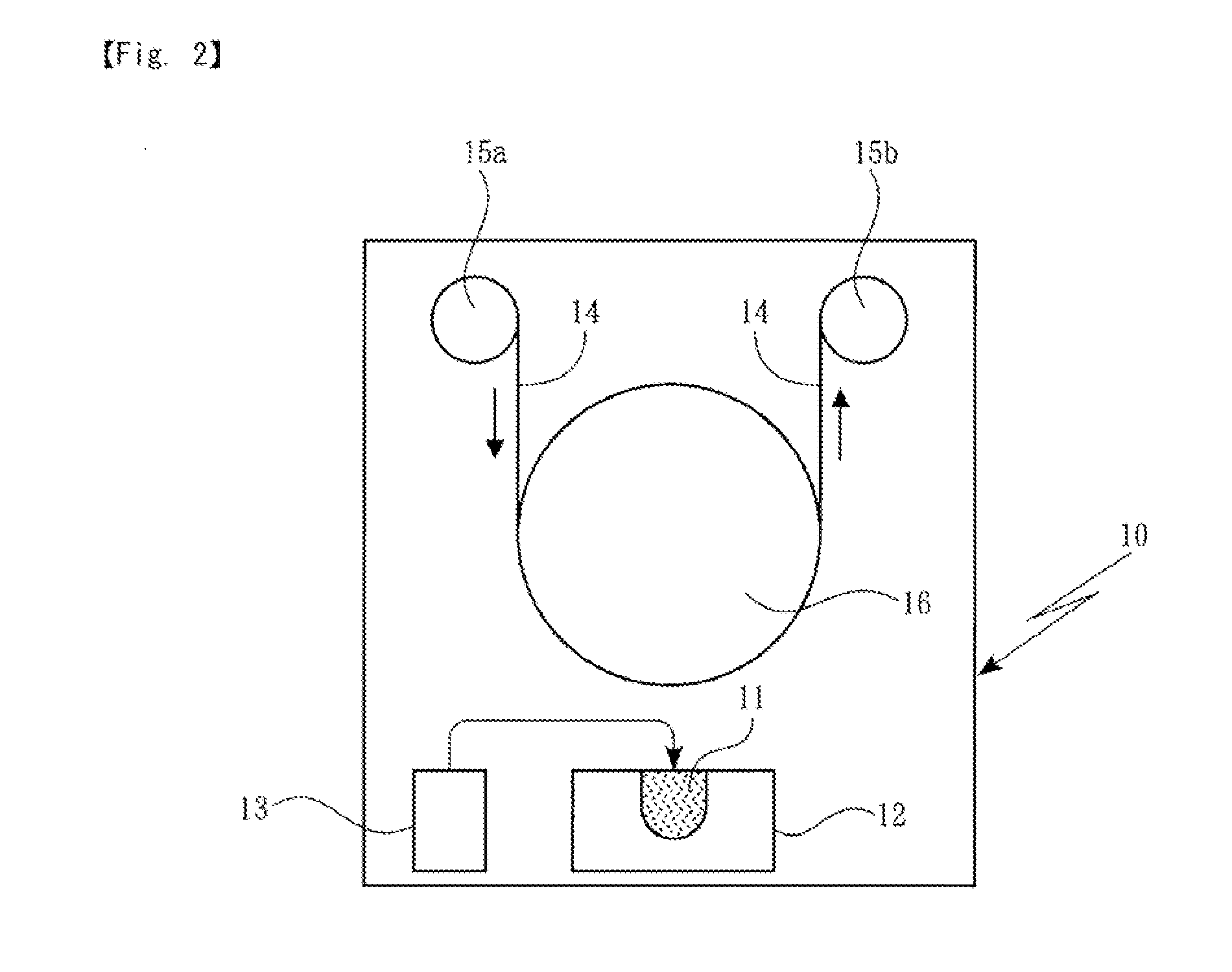Negative electrode for lithium secondary batteries and lithium secondary battery
- Summary
- Abstract
- Description
- Claims
- Application Information
AI Technical Summary
Benefits of technology
Problems solved by technology
Method used
Image
Examples
example 1
[0033]In Example 1, a cylindrical lithium secondary battery with a diameter of 12.8 mm and a height of 37.7 mm, as illustrated in FIG. 1, was fabricated using a positive electrode, a negative electrode, and a non-aqueous electrolyte solution that were prepared in the following manner.
Preparation of Negative Electrode
[0034]A material capable of alloying with lithium, used as the negative electrode active material, was obtained in the following manner. A silicon seed placed in a reducing furnace was heated to 800° C. by passing electric current therethrough, and a mixed gas of high-purity monosilane (SiH4) gas and hydrogen gas was flowed therein to deposit polycrystalline silicon on the surface of the silicon seed. Thereby, a polycrystalline silicon ingot was prepared. Then, the polycrystalline silicon ingot was pulverized and classified to prepare a negative electrode active material formed of polycrystalline silicon particles having a purity of 99%. The polycrystalline silicon parti...
examples 2 to 6
[0048]In Examples 2 to 6, negative electrodes were prepared by varying the thickness of the conductive layer in preparing the negative electrodes in the same manner as described in Example 1. The thickness of the conductive layer, made of Cu and formed on the negative electrode active material layer, was set at 10 μm in Example 2, 20 μm in Example 3, 30 μm in Example 4, 35 μm in Example 5, and 40 μm in Example 6. Lithium secondary batteries of Examples 2 to 6 were fabricated in the same manner as described in Example 1, except for using the respective negative electrodes prepared in the just-described manner.
PUM
 Login to View More
Login to View More Abstract
Description
Claims
Application Information
 Login to View More
Login to View More - R&D
- Intellectual Property
- Life Sciences
- Materials
- Tech Scout
- Unparalleled Data Quality
- Higher Quality Content
- 60% Fewer Hallucinations
Browse by: Latest US Patents, China's latest patents, Technical Efficacy Thesaurus, Application Domain, Technology Topic, Popular Technical Reports.
© 2025 PatSnap. All rights reserved.Legal|Privacy policy|Modern Slavery Act Transparency Statement|Sitemap|About US| Contact US: help@patsnap.com



